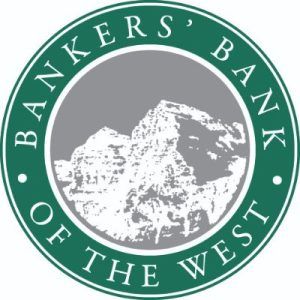“The only constant in life is change,” a sentiment famously attributed to the Greek philosopher Heraclitus, has never felt more relevant than in the world of community banking today. With the rapid evolution of technology, shifting regulations, changing demographics and the dynamic growth of digital payments, community banks are experiencing continual transformation. Nowhere is this change more evident than in the ATM and debit card industry. For nearly 40 years, community banks have been involved in the ATM/debit card market. Over this time, advancements and improvements have become the norm. However, many community banks still view their ATM and debit programs as a “necessary competitive evil.”
The Rise of Debit Cards and Changing Consumer Behavior
The late 1980s and early 1990s saw the emergence of the debit card, marking the beginning of a shift in consumer spending habits. Online purchasing has accelerated that buying pattern change exponentially. What was originally designed as an income enhancement to the traditional ATM card has now morphed into a payment profit center for the overwhelming number of community banks. Transaction averages on the purchase side have exploded, while traditional ATM transactions have shrunk over the past 30 years. Statistics in an article from FSG Insights show consumers now average more than 30 point-of-sale (POS) transactions per month, spending over $1,300 each month, compared to fewer than one traditional ATM withdrawal per month.
ATM Ownership: What is the Value Now?
What now is the value of an ATM given the drop in average cardholder ATM transactions? Banks historically have placed ATMs for a variety of reasons: to satisfy customer service expectations, to enhance the bank’s public image, as a defensive measure to lock a competitor out, or as a profit center given the machine’s high traffic location. Over time, however, the cost of purchasing, upgrading, maintaining, servicing and providing security to ATM locations has increased while overall ATM transaction activity has decreased.
Customers have reluctantly come to accept the cost of an ATM withdrawal from an “out-of-network” machine. According to the personal finance website Bankrate, the average fee charged to a cardholder for a foreign ATM withdrawal is $4.77. (On average, $1.58 from the card-issuing bank and $3.19 from the ATM-owning entity in the form of a surcharge.) In the end, the cardholder pays 6% for an ATM withdrawal amount of around $80, which is today’s average ATM withdrawal amount and a significantly higher percentage for lesser withdrawal amounts. Banks walk a fine line between customer expectations of having to pay for access to their money and the actual hard cost of the ATM. How best to manage this dilemma?
Strategies To Balance Costs and Customer Expectations
To strike a balance between customer satisfaction and cost management, community banks have employed a variety of strategies:
- Surcharge-Free Networks: Surcharge-free networks have been a viable option for several decades. There are two national surcharge-free networks — MoneyPass and Allpoint — which offer cardholders access to thousands of ATMs without incurring a surcharge. These networks come with monthly and transaction fees that card-issuing banks pay to enable their cardholders access to free ATM transactions.
- Surcharge Reimbursement Programs: Some community banks have gone a different route and provided their cardholders with a surcharge reimbursement program to cover the cost of a cardholder’s surcharge, most with a monthly cap of $10 to $15. This approach allows banks to save on the capital costs of placing and maintaining ATMs while still meeting customer needs.
To be fair, some community bankers have found an issue with either of these customer service strategies because it pushes the cardholder to a competitor’s machine. Doing so exposes the issuing bank’s cardholders to the competitive marketing strategies of the ATM owner, which can be competitively troublesome. - Merchant Cash Back: Another alternative is the concept of merchant cash back at point-of-sale terminals, a feature already available at many big retailers. While it provides cardholders with quick access to cash, there are drawbacks. The maximum amount of cash available is often limited to $40 or less, and this method uses PIN-based transactions, which can reduce the bank’s earnings from the transaction.
- ATM Managed Service Programs: In recent years, another interesting option has presented itself, and that is the idea of a community bank outsourcing ATM locations and placements through an ATM Managed Service program. There are several companies that offer this outsourcing opportunity with varying tiers or levels of service. Banks have the option to purchase or lease ATM machines and have the outsourcing service handle everything related to cash replenishment, software upgrades, balancing and general servicing. In many instances, the Managed Service program enables a community bank to have an economically efficient way to rid themselves of the day-to-day hassles and headaches that ATM ownership can present while still providing customer service access to cash that the customers expect.
The Path Forward
Ultimately, the best solution for each community bank will depend on several factors, including customer needs, cost efficiency and brand image. This is by no means one size fits all and there are no magic solutions. The good news is that community banks have been in the ATM/debit business for several decades and, through their EFT processors and/or their correspondent bank, have a wealth of data and material to make an educated decision on the best path to employ. By reviewing transaction data and understanding their market, banks can make informed choices about strategies that will best meet their goals and ensure they remain competitive in a rapidly changing industry.








